
All photos on this page were taken by the author between March and May 1995.
Kneese (1984), in a study of the economic benefits of clean air and water, calculated that even a very small reduction of 0.01ppm in ground-level concentration would result in a million fewer cases of chronic respiratory disease in the work force, yielding a benefit to business of greater than a billion dollars a year. (Odum, p. 123)Society has to pollute at a reasonable level. What is a "reasonable level," and why shouldn't it be zero? It is very costly to eliminate all pollution, and society should maximize its welfare by only eliminating the pollution that it benefits by preventing. This might sound anti-environmentalist, but it is not at all. Natural resources have some capacity to recover from pollutants, but once that threshold, or assimilative capacity, is surpassed, we have a social problem (Dillingham et al., p. 477). It's not possible to have a level of zero pollution, but we should not pollute past the assimilative capacity of the resources unless we find a technology that will clean up the pollutants. This can be extremely expensive; therefore, we should pollute at a level where the marginal cost of preventing pollution is equal to its marginal benefit. What does this mean?

In the above graph, we can see that where the marginal social cost (MSC) of environmental quality is equal to its marginal social benefit (MSB), we have the efficient level of pollution, Q*. Why is this? This is the point after which the cost of an additional unit of pollution prevention exceeds the benefits to society derived from that additional unit of pollution prevention. For all units of pollution prevention from zero to Q*, the benefits derived from a one-unit increase in environmental quality exceed the costs.
When companies (and individuals) who pollute do not bear the full costs of their pollution, their marginal private cost (the cost of one more unit of environmental quality) is lower than that of society. Currently, the United States government regulates pollution using either direct or indirect regulation. Direct regulation requires companies to limit their emissions of certain pollutants to a certain emission standard. Indirect regulation can take many forms, but the basic aim is to bring the level of pollution down to the desired level by giving companies financial disincentives to pollute (Dillingham et al., pp. 480-483). The OECD countries (most of which are industrialized nations) subscribe to the Polluter Pays Principle (PPP), which "requires that those emitting damaging wastes to the environment should bear the costs of avoiding that damage or of containing the damage to within acceptable limits according to national environmental standards" (Pearce, p. 41). These additional costs of pollution can be borne in part by the consumer; the crucial element is that those who benefit from the activity causing pollution are the ones responsible for reversing the damage they cause or preventing the damage from occurring to begin with..
Also, if we pollute streams, rivers, forests, mountains, and other natural resources, the plants and animals that live there die; we destroy their ecosystem. This significantly affects the quality of the surrounding area and does have an effect on the world as a whole. The more this happens, the worse off our world's environment becomes.

A river in Mina Clavero in the province of Cordoba, Argentina.
The majority of our water is currently purified naturally in the hydrological cycle. If we contaminate our water, we will have to spend much more for each gallon of purified water than we currently do. What nature does for free costs us at least a dollar a gallon (Odum, p. 111)!
So we have a stake in keeping our environment within its assimilative capacity for pollution.

Iguazu Falls are an amazing natural resource located between Argentina and Brazil. Tourists come from all over the globe to see this natural wonder. Relatively unpolluted natural phenomena are common in Third World countries and must be protected so that they can be enjoyed for generations to come. Pollution could easily destroy the unique ecosystem at Iguazu. Currently both Argentina and Brazil have national parks on their sides of the Falls; they are trying to preserve the pristine beauty of the site.
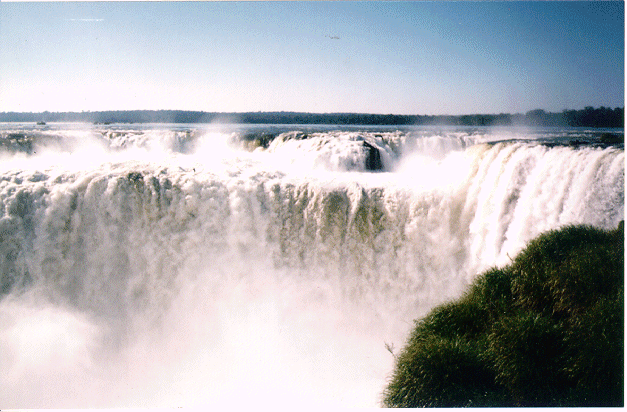
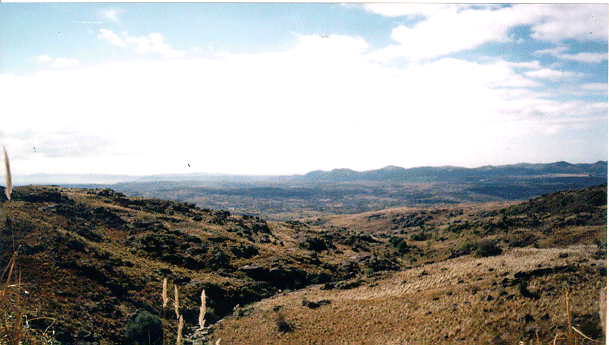 The mountains in the province of Cordoba, Argentina. The ones here are largely untouched by
humans. There is nary a house in view!
The mountains in the province of Cordoba, Argentina. The ones here are largely untouched by
humans. There is nary a house in view!
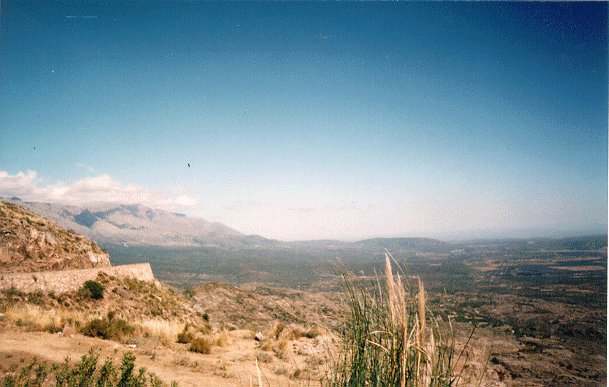
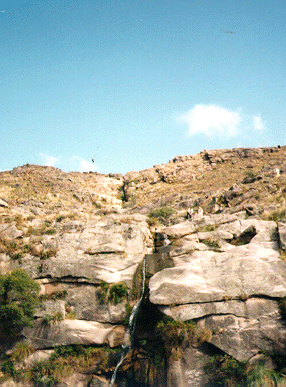
Here is a small waterfall on the side of the road in Cordoba province, facing the mountains shown above.
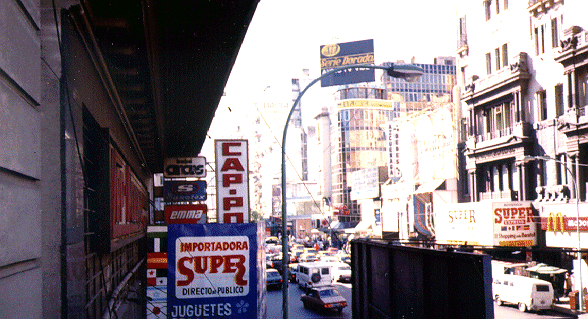
Traffic in Buenos Aires, Argentina. Even most new cars in Third World countries are not as technologically advanced as those available in developed countries in North America and Europe since they are produced in factories with lower technological capabilities. The emissions standards, if any, in Third World countries are much lower than those of the developed countries. Modern cars are imported under exorbitant tariffs and hefty transportation costs. When I was in Buenos Aires earlier this year, I saw an ad for a used 1995 Honda Civic. Asking price: over $27,000! Because of a variety of economic and political factors, it is not feasible to require the same emission standards as we have in countries like Argentina; cars, which are already completely unaffordable for the majority of the population, would become unreachable.
So, how should we prevent pollution in underdeveloped countries? Perhaps industrial countries' governments could contribute money to Third World countries' industrial sectors if they comply with higher environmental quality standards. In that way, they would not have to worry about losing international business to surrounding countries; the extra foreign funding would ideally offset the cost of implementing the more environment-friendly technology. This would only be feasible, of course, if the benefits derived by the industrial countries derived a social benefit greater than the amount paid to Third World countries. But it might just work. And it might help to prevent the future deterioration of our planet's most precious and as-of-yet-unpolluted resources.
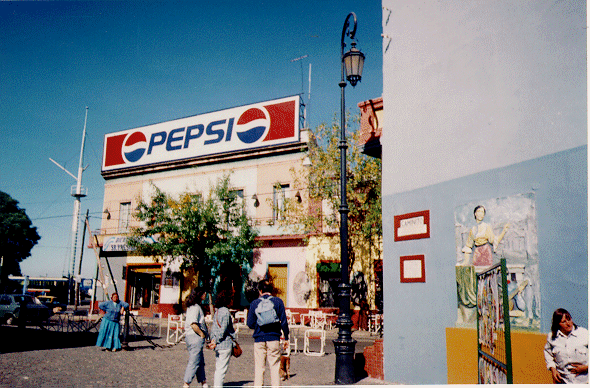
Because ours is truly a global economy, international companies are present in the most underdeveloped of countries. Buenos Aires, Argentina is one of the more advanced Third World cities, but even in its less modern La Boca section known for its Italian influence, working class residents, and Caminito (a brightly painted block with artwork on the outside of buildings and in the open), Pepsi is prominently advertised!
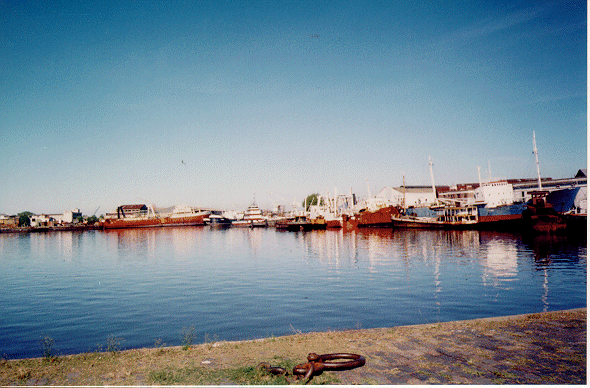
This is the harbor of La Boca, less than a block from the Pepsi sign.
The following are links to other sites where you can find information relating to pollution and economics:
Market-Based Environmental Laws
An article from the EcoSocialist Review-- probably not the most mainstream publication around...The Pollution Solution
The Link Between Driving and Air Pollution
Background on the Innovative Technologies Group of the Santa Barbara County Air Pollution Control District.Air Pollution
The Yahoo directory of Society and Culture:Environment and Nature: Pollution.Effects of Air Pollution
This page shows graphics of the effects of air pollution on visibility and materials.EcoNet Home Page
EcoNet is an environmental organization. Its page features a list of links to news and features as well as a resource center and list of environmental organizations.Cleaning the Skies?
"Are the skies cleaning up?" from The European by Fred Pearce.
A Japanese page (in English) with commentaries on Ecology.Air Quality Management District WWW Server
Pollution Prevention & Control
This page is run by the U.S. Bureau of Mines.